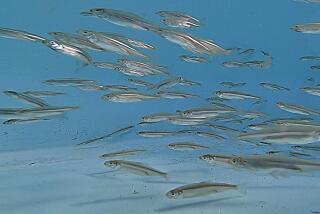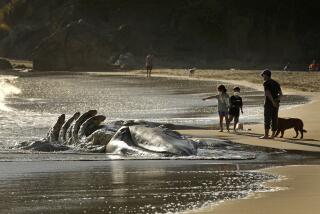Salt Facility and Gray Whales
- Share via
I would like to respond to some of the claims made by Homero Aridjis and Serge Dedina about the San Ignacio salt flats project in Mexico (“How Saving Whales Advances Democracy,” Commentary, Nov. 25).
The Vizcaino Desert is one of the most arid and isolated regions of the state. Traditional economic activities, like agriculture and cattle-raising, are therefore limited. For more than 40 years, Exportadora de Sal has operated a salt facility in Guerrero Negro. This operation has meant employment of more than three generations of families.
ESSA has demonstrated its commitment to the conservation of the environment and the responsible development of the area. Over half of the seawater ponds used in the salt production process have become natural wetland habitats for thousands of birds. Environmental activists threaten the extinction of the gray whale to gain supporters for their cause. The gray whale population in the state, however, is healthy and its numbers are increasing.
Aridjis and Dedina irresponsibly question the legitimacy of the democratic process of our state. In 1999, the ruling party lost power for the first time in our history.
To oppose such a low-impact development option could inhibit other initiatives proposed by residents of the biosphere reserve. The 21 representatives of the XI Legislature of the Baja California Sur Congress committed to oppose the salt flats project if it is proven that the gray whale or the San Ignacio Lagoon ecosystem could be harmed. Otherwise, we will defend sustainable development projects, so badly needed in Baja California Sur.
VICTOR MARTINEZ DE
ESCOBAR COBELA, Secretary
Ecology Commission of the Baja
California Sur Congress, Mexico
More to Read
Sign up for Essential California
The most important California stories and recommendations in your inbox every morning.
You may occasionally receive promotional content from the Los Angeles Times.










